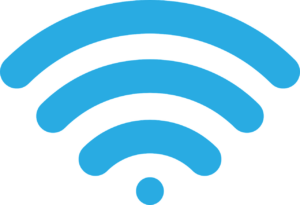Get Connected
Broadband Tools for You
Do you know how much bandwidth your household needs? Are you getting the advertised Internet speeds that you’re paying for? Do you want to know which Internet Service Providers are in your area? Tools on this page can help you find answers to those questions!
How much Bandwidth do I need?
 The Broadband Now usage calculator will step you through a series of questions that can give you an idea of how much bandwidth you may need for your household.
The Broadband Now usage calculator will step you through a series of questions that can give you an idea of how much bandwidth you may need for your household.
The results page will suggest a provider on the right — click on the “See all providers in <your zip code>” link to see a general listing of providers in the region.
For a more accurate listing of providers for your address, use the “Find Broadband Providers in Your Area” link in the section to the left.
Check My Internet Speed
Check your Internet speed without leaving this page (click the blue Start button below). For other speed test options and to report your speed test data, please visit our Speed Test page.
Provided by OpenSpeedtest.com
Find Broadband Providers in Your Area

Which companies provide Internet service in your area? Click here and enter your address! A list of Internet Service Providers for your area will appear on the right portion of the page.
There are a few regional ISPs that don’t provide information to the FCC and aren’t listed in most provider listings. These regional ISPs include:
- Fox Industries (Bridgeport & Twin Lakes)
- Schat.net (Bishop & Mono County)
- Hartstrom Wireless (Devil’s Gate)
- Mono Broadband
Reporting Service Issues

The linked buttons below will take you to the service support pages for known providers in our area.
Escalating Service Issues
![]() Links to escalation portals for each of our major, regional Internet service providers are below. It is important and very helpful for you to have requested support from your provider and to have allowed that process to work before escalating an issue through these portals.
Links to escalation portals for each of our major, regional Internet service providers are below. It is important and very helpful for you to have requested support from your provider and to have allowed that process to work before escalating an issue through these portals.
Reporting Past Issues
 If you would like to submit information on service issues in the past, you can click on the Report Past Issues button to provide data that we will use to analyze service delivery issues in the region. The Past-Issues data will not be forwarded to the Internet service providers for resolution, but it will be used to analyze broadband service quality in the region and provide recommendations to service providers.
If you would like to submit information on service issues in the past, you can click on the Report Past Issues button to provide data that we will use to analyze service delivery issues in the region. The Past-Issues data will not be forwarded to the Internet service providers for resolution, but it will be used to analyze broadband service quality in the region and provide recommendations to service providers.
Federal Affordable Connectivity Program
Reliable internet access at home is a basic need today for work, school, healthcare and more. But too many families are struggling with the steep cost of internet service. Now with the Affordable Connectivity Program (ACP) discount Home Internet can be Free. The Affordable Connectivity Program can help eligible households reduce their monthly internet bill up to $30. Qualifying families on Tribal Lands can reduce their monthly internet bill by $75.
The ACP eligibility and application process has been streamlined to make it easy for qualified households to start saving on their internet bill as soon as possible. To learn more about ACP and fill out an application, please visit: https://www.internetforallnow.org/applytoday/ or call 866-745-2805.
